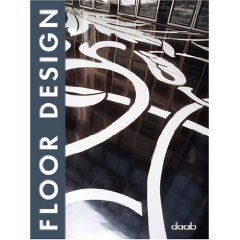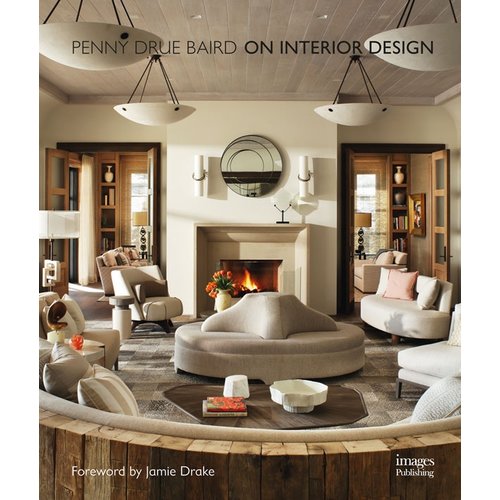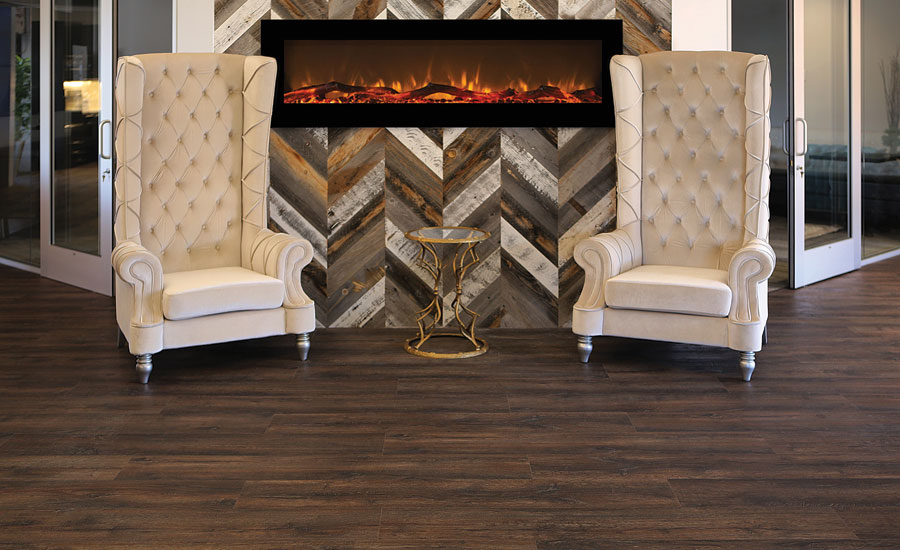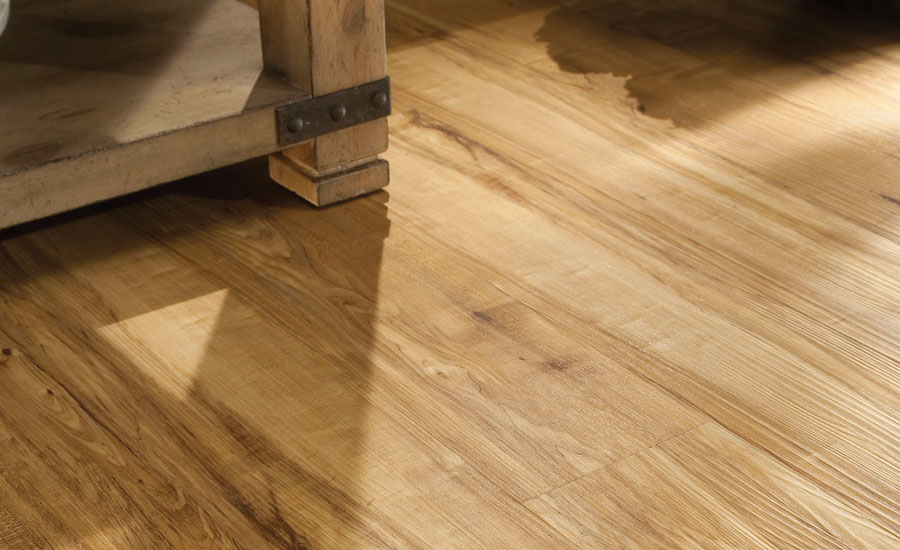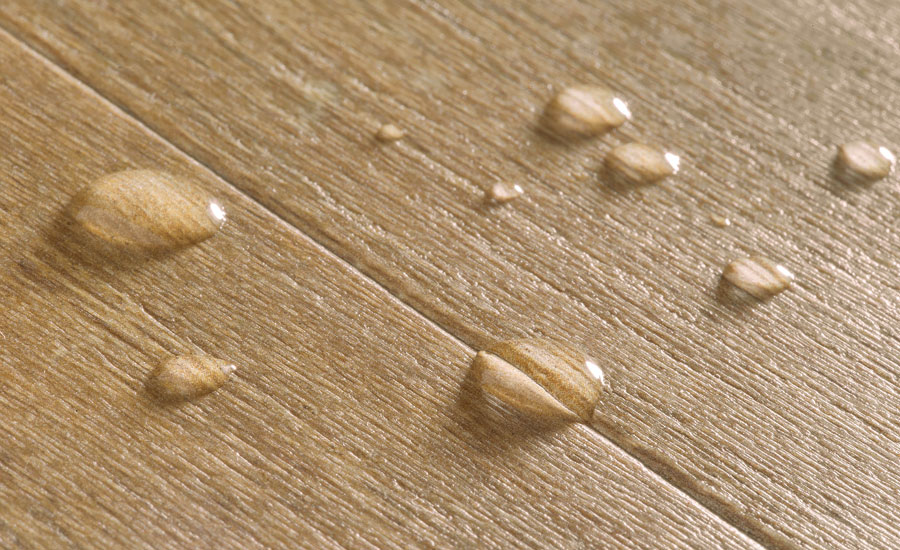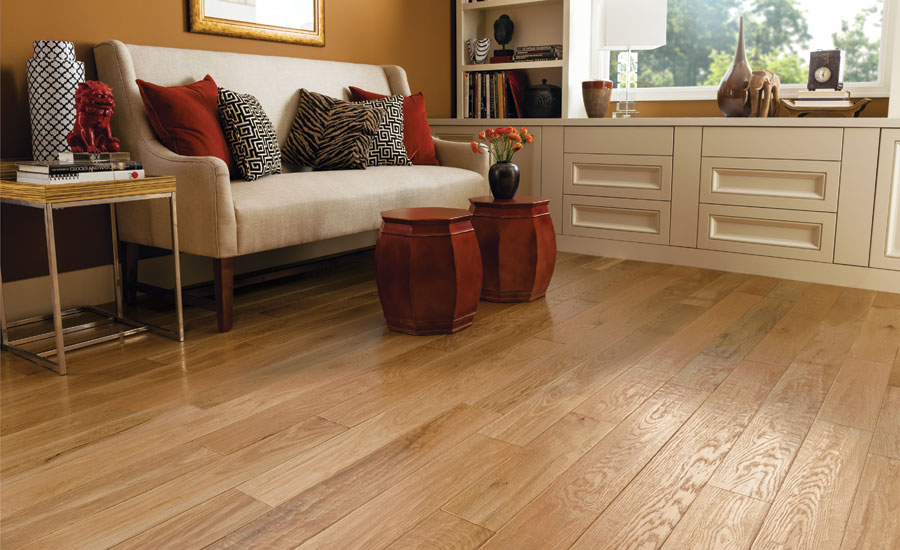Floor Trends Trend Report: Design, Technology and Sustainability


Novalis’ NovaFloor Lyndon Montgomery 6" by 36" planks.


Salvaged Redwood, part of Karndean Designflooring’s Van Gogh collection.


Quick-Step’s Envique laminate flooring collection features HydroSeal, a coating designed to repel water on both the surface and the joint.

Floorté LVT in Classico, from Shaw.

Armstrong’s American Scrape hardwood flooring in White Oak.

Metroflor’s Engage Select Tile, in Ice.









Fall is nearing its end and winter is approaching, that time of year when the biggest flooring shows and markets get ready to showcase aisles upon aisles of manufacturers eager to unveil their latest products and get the 2016 selling season under way. Before we rush headlong into next year’s styles and innovations, we thought we’d pause for a moment to assess some of this year’s products in both hard and soft surface. We explore the thinking behind them and what that says about the future of flooring design, technology and sustainability.
Article Index:
Hard Surface
According to Amy Costello, Armstrong World Industries sustainability manager, design and construction of the company’s flooring comes down to many factors. “Eco-friendliness is one, as is lifestyle, traffic, durability and of course the look.”
Eco-friendliness itself can mean many different things. “Some customers want recycled content, recyclability, low VOC, EPDs, non-PVC, high-light reflectance to reduce building energy use, etc. At the end of the day, you must first pick the product that provides the right performance and then the eco-friendly attributes that are important to you.”
She noted that the company’s product decisions are driven by customer need. “For example, our customers wanted a hand-scrape, made in the U.S., at the same or close to the same price as an import product. We have accomplished that in our Somerset, Ky., plant. Made in the USA allows us to shorten our supply chain, increase our efficiency and improve our flexibility to better respond to fluctuating demand, while maintaining our quality and improving our product’s environmental footprint.”
The company is also building a new LVT plant in Lancaster, Pa. “Designed to be more energy efficient, this new facility includes grinding equipment to process post-consumer and in-house waste material so that Armstrong LVT manufactured there will be recyclable and have a reduced environmental footprint.”
“There is a growing awareness on how products affect the environment and a manufacturing facility affects the global environment.”
More than 90 percent of the company’s Armstrong and Bruce hardwood is manufactured in the United States as well. “We have recently ‘on-shored’ our hand-scraped engineered wood products. We benefit from being better aligned to local tastes and performance requirements. Locally produced products can be key to many consumers and impacts their purchase decision process.”
Caroline Wille, IVC US director of product development and design, said manufacturers continue to search for “solid solutions to old pains, such as waterproofing, scratch residence and dimensional stability. Having a locally manufactured product is also a very strong selling feature.”
The importance of sustainability in the minds of the consumer continues to grow. “There is a growing awareness on how products affect the environment and a manufacturing facility affects the global environment. In Europe, IVC has built windmills to be able to use that harnessed green energy. In the U.S., we use solar panels to power our fleet of electric forklifts and utilize our own—and only our own—recycled material in our LVT.”
Customers are also becoming more comfortable with choosing a wider range of products for mixing and matching throughout the home. “Some products are better in bedrooms because they are warm underfoot, and others are water-resistant so they lend themselves more toward the bathroom or kitchen. As a manufacturer, this brings us some unique and exciting challenges because you have to think about how our customers might mix them in their space.”
Emil Mellow, Karndean Designflooring vice president of marketing, said the size formats for products including engineered hardwood, LVT and porcelain tile are increasing. “Plank-sized tiles are popular in the porcelain category, which we offer through our Art Select Stone LVT collection. Our travertine [look] FreeLengths showcase the trend of stone plank visuals in a variety of lengths for a random plank appeal with a wide variety of design options. Reclaimed looks are very popular, as well.”
He said digital printing technology allows Karndean designers to experiment with different looks and textures including “the deep scorching effects, rough-sawn visuals, and distinctive knot and grain details of reclaimed wood in our new Van Gogh Reclaimed collection.”
Mellow added that the company looks at flooring from a holistic perspective. “You can’t look at it simply as a square foot project; it’s about the space as a whole. The ability to combine flooring materials, furnishings, accessories and other design aspects is crucial to helping customers find the perfect look to match their style.”
Gary Keeble, Metroflor director of marketing, sees the popularity of floating floor profiles—which allow glueless installation—as a growing trend. “It seems to be the catalyst for growth when it is applied to a flooring category that has not up to now been associated with a floating installation. Floating technology in click LVT is probably the primary driver in this exploding product category.”
He noted that design trends are increasingly being influenced by online sources. “The popularity of HGTV and other shelter media have a great deal of influence on trends as well as bloggers and social media sites such as Pinterest and Houzz.”
In LVT, planks up to 6’ in length are following the same trend of wider and longer planks in hardwood. “Longer lengths are typically coupled with wider widths, which can produce fewer unique planks. However, we incorporate certain manufacturing techniques that allow our longer planks to have a higher number of unique planks to further enhance the natural look of the floor and minimize the pattern repeat.”
The company strives for sustainability. “All products go through a rigorous evaluation by our Compliance, Safety, and Sustainability (CSS) committee, which includes environmental impact, compliance with environmental codes and requirements, life cycle assessments and performance testing to ASTM standards. Any new development and innovation is driven by our product design team working in concert with our CSS committee.”
According to John Wu, Novalis Innovative Flooring president and CEO, flooring technology is an important aspect in the design of LVT. “Our technology enables us to provide more detail and realism in our LVT than ever before. Also, our development of a bio-based plasticizer has given us a better alternative to the use of phthalates in our product. So, technology does inform both the aesthetics and engineering design of our flooring.”
Sustainability also plays into the design and manufacture of the product. “It influences the design of our product in many ways: where we source our raw materials, how much water and energy we save, how little pollution we produce, how we recycle our waste, how recyclable our product is, how long it lasts, etc.”
Quick-Step’s Roger Farabee, senior vice president of marketing for Unilin NA and Mohawk Hard Surfaces, is quick to point out the technological advances of his company’s Envique Collection of laminate flooring. “The collection [of six styles] uses proprietary technology to increase the realism of the designs and create extremely deep, textured structures, including fire-charred, sandblasted, wood concrete, vintage hardwood, naturally weathered, chatter, cracks, saw cut, wire-brushed, splits, knots, smoked and hand-scraped.”
The collection features HydroSeal—a coating designed to repel water on both the surface and the joint—as well as the Uniclic installation system. Farabee added, “Quick-Step’s innovative technologies allow for the design scanned in from the original material to be expertly enhanced in several ways, so the very best final design is achieved.”
To stay on top of the latest trends, the company “continually engages with customers, retailers and other influencers. That drives how we invest in product, service and process innovations,” Farabee stated.
Trey Thames, Shaw Industries vice president, residential marketing and product management, said his company’s newest technologies extend across multiple categories. In hardwood, Shaw has introduced Epic Plus Engineered Hardwood with Stabilitek. “Constructed from wood fibers bonded with proprietary chemistry, Stabilitek holds up to the challenges of climate fluctuation and subfloor moisture. Glue-down, float, nail or staple installation is simple with a newly designed tongue-and-groove system.”
In resilient, the company’s Floorté collection offers waterproof flooring in a product featuring high-definition printing and the Fold-n-Tap locking system, Thames stated. The product is also flexible, “concealing imperfections of the subfloor beneath, so less floor prep is needed.”
Sustainability is incredibly important to Shaw, Thames noted. “We employ a diverse portfolio of sustainability solutions with our products and our manufacturing processes. Today, 66% of the products manufactured by Shaw are Cradle to Cradle Certified, and we continue to increase the number of products we make and source that adhere to those principles of healthy materials, material reutilization, water and energy stewardship, and social fairness.”
Soft Surface
Mike Sanderson, Engineered Floors vice president of marketing, said the market is trending in two directions: “more environmentally-friendly products and more durable products. To achieve both of those requires the latest and best technology.”
His company’s technological advances include “improving the performance of stain and soil resistance so the consumer has the freedom to use carpet in places where she may have been reluctant to before. Also, our technical capability to create tonal or multi-colored solids has created a more natural look than the traditional one-color solids of the past.”
He believes manufacturing solution-dyed fiber products is environmentally friendly, as it “requires far less in the way of water, energy and greenhouse emissions to produce. The added benefit of that is a more vibrant and consistent color, using our PureColor polyester or nylon fiber that’s stain and fade resistant.”
Carpet remains popular because of its design versatility, Sanderson added. “Carpet complements anything and everything because so much of what we produce at Engineered Floors is natural color palettes, tonal solids and neutrals.”
Mohawk’s Nathan Hammett, manager of color and design, sees growing interest in “more complex multi-color looks (as compared to dated spot and dot flecks)” which is the result of “much improved yarn manufacturing, tufting, and dyeing technology. This has allowed us to explore many new options in relation to thread-ups and patterning that have increased our ability to create unique products for the consumer.”
Along with the increase in multi-color looks, upscale patterned pieces are also trending. “We belong to several color and design trend-forecasting organizations so we get some really good information to utilize. When you combine this information with regular attendance and participation in home fashion markets and shows, you begin to get a really clear picture of which way color and design is moving for the marketplace.”
Sustainability remains a high priority for Mohawk. “Continuum, which uses recycled content as the fiber source, and SmartStrand with its organic foundation are our two most successful platforms in the creation of highly desirable, sustainable products.”
Having a hand in many different flooring categories also influences the looks of Mohawk products. “In our view, everything adds to the finished area that is created in home décor. We are mindful of how all surfaces work together and coordinate with each other, whether soft surface or hard. We also work closely and share information with our hard surface development teams to ensure we are all promoting the same message of color and design.”
Susan Curtis, Phenix vice president of marketing and product development, points to several trends in the past few years in carpet. “Innovations have focused on hand and softness of the finished product as well as stain resistance specifically tied to pets living in the home. We also find that consumers are specifically shopping for solution-dyed products, not only for their durability and performance, but for the color complexity and aesthetic sophistication that can be achieved with these fibers.”
She refers to the company’s ColorSense technology as a recent innovation. “ColorSense is an inventive process that delivers randomization of color. Individually colored yarns are carefully blended to achieve distinctive color articulation and an overall balance of tone, establishing a rich foundation upon which a consumer can feature other finishes and elements of a room. We employ this technology in both Stainmaster PetProtect and our SureSoftSD P.E.T. solution dyed polyester carpets.”
Sustainability is an important topic of conversation for consumers choosing carpet, but it’s far from the only conversation, Curtis noted. “For some consumers sustainability is an important factor when choosing flooring finishes, and for several decades the flooring industry has responded to reduce the environmental impact of flooring material.”
Consumers are increasingly savvy about design choices, influenced by both information online and cable home-improvement shows. “Residential design has evolved to more open plans, where line of sight extends beyond a single room to encompass multiple rooms and often beyond to the outdoors through large windows and ‘exterior’ rooms. This has resulted in a focus on nature and natural-inspired aesthetics.”
“In previous decades, the consumer’s preference was for one color and one type of flooring throughout the entire home. Today, there’s more variety. You can mix and match different colors and surfaces to create distinctive looks in each room.”
Thames believes consumers are looking for carpet that can combat spills and stains. “That led to Shaw to think differently about how we expand upon proven offerings like R2X, which resulted in the development of LifeGuard—first with our Life Happens collection introduced early this year, and now with Anso LifeGuard, our newest collection.”
According to Thames, LifeGuard greatly reduces the wicking of stains, giving customers more time to clean up spills. “LifeGuard’s patented backing system also keeps liquids from seeping into the backing, making it easier to clean and offering protection against odor-causing spills—including pet accidents.”
He said the increased popularity of hard surface products is bringing new opportunities to soft surface. “The vast majority of households layer rugs on top of their hard surface to bring added color, warmth and comfort to their home. This insight led to the enhancement and expansion of our Cut-A-Rug program, which offers consumers the opportunity to create a rug from our carpet collections and to customize that rug with the shape, size, color and trim of their choice.”
This interconnected perspective has led to Shaw’s design teams in both hard and soft surface working together when creating new products. “What we’re doing in hard surface influences what we create in carpet and vice versa. We’re not just thinking about what works well in a wall-to-wall setting, but what carpet styles would also make a great statement as a rug and how we can create hard and soft surface collections that complement one another.”
Thames added, “In previous decades, the consumer’s preference was for one color and one type of flooring throughout the entire home. Today, there’s more variety. You can mix and match different colors and surfaces to create distinctive looks in each room. That is much less daunting than updating an entire home at one time, and can result in more frequent flooring purchases as well as multiple flooring types throughout the home.”
Looking for a reprint of this article?
From high-res PDFs to custom plaques, order your copy today!







